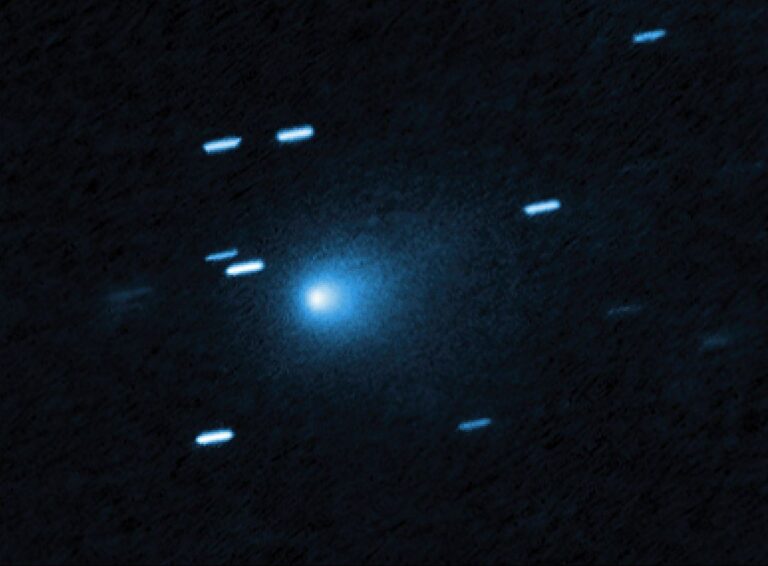Key Takeaways:
Imagine having three clocks in your house, each chiming at a different time. Astronomers have found the equivalent of three out-of-sync clocks in the ancient open star cluster NGC 6791. The dilemma may fundamentally challenge the way astronomers estimate cluster ages, researchers say.
Using NASA’s Hubble Space Telescope to study the dimmest stars in the cluster, astronomers uncovered three different age groups. Two of the populations are burned-out stars called white dwarfs. One group of these low-wattage stellar remnants appears to be 6 billion years old and another appears to be 4 billion years old. The ages are out of sync with those of the cluster’s normal stars, which are 8 billion years old.
“The age discrepancy is a problem because stars in an open cluster should be the same age. They form at the same time within a large cloud of interstellar dust and gas. So we were really puzzled about what was going on,” explains astronomer Luigi Bedin, who works at the Space Telescope Science Institute.
Ivan King of the University of Washington and leader of the Hubble study says: “This finding means that there is something about white dwarf evolution that we don’t understand.”
After extensive analysis, members of the research team realized how the two groups of white dwarfs can look different and yet have the same age. It is possible that the younger- looking group consists of the same type of stars, but the stars are paired off in binary-star systems, where two stars orbit each other. Because of the cluster’s great distance, astronomers see the paired stars as a brighter single star.
Binary systems are also a significant fraction of the normal stellar population in NGC 6791, and are also observed in many other clusters. This would be the first time they have been found in a white-dwarf population.
“Our demonstration that binaries are the cause of the anomaly is an elegant resolution of a seemingly inexplicable enigma,” says team member Giampaolo Piotto the University of Padova in Italy.
Bedin and his colleagues are relieved that they now have only two ages to reconcile: an 8-billion-year age of the normal stellar population and a 6-billion-year age for the white dwarfs. All that is needed is a process that slows down white-dwarf evolution, the researchers say.
Hubble’s Advanced Camera for Surveys analyzed the cooling rate of the entire population of white dwarfs in NGC 6791, from brightest to dimmest. Most star clusters are too far away and the white dwarfs are too faint to be seen by ground-based telescopes, but Hubble’s powerful vision sees many of them.
White dwarfs are the smoldering embers of Sun-like stars that no longer generate nuclear energy and have burned out. Their hot remaining cores radiate heat for billions of years as they slowly fade into darkness. Astronomers have used white dwarfs as a reliable measure of the ages of star clusters, because they are the relics of the first cluster stars that exhausted their nuclear fuel.
White dwarfs have long been considered dependable because they cool down at a predictable rate. The older the dwarf, the cooler it is, making it a seemingly perfect clock that has been ticking for almost as long as the cluster has existed.
NGC 6791 is one of the oldest and largest open clusters known, about 10 times larger than most open clusters and containing roughly 10,000 stars. The cluster is located in the constellation Lyra.
The first results appeared in the May 10 issue of the Astrophysical Journal, and the clarification about binaries was in the May 20 issue of the Astrophysical Journal Letters.











